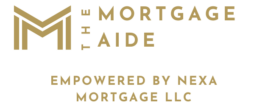Bank Statement Loan
Highlights of the Bank Statement Loan
(1) Instead of using W-2s or tax returns, lenders review 12-24 months of personal or business bank statements to calculate your income. (2) Often allow higher loan limits (3) Easier qualification for self-employed borrowers

Eligibility
Here are some of the eligibility requirements for the Bank Statement Loan program. Select ‘Get Started’ to check if you’ll be a good fit.
For self-employed or business owners, you typically need to be self-employed for at least 2 years
You need 12-24 months of personal or business bank statements to calculate your income
Most lenders require a minimum credit score of 620-680, but a higher score may lead to better terms
Down payment of 10-20% is usually required, depending on your credit profile and the lender
DTI typically needs to be 50% or lower, although some lenders may allow exceptions
You may need 3-6 months’ worth of reserves (savings) to cover mortgage payments
Common Questions
How do lenders calculate my income with a bank statement loan?
Lenders average your monthly deposits over 12-24 months to determine your income. They may apply an expense factor (usually 50-70%) for business bank statements, which reduces the qualifying income.
Can I use both personal and business bank statements?
Yes! Some lenders allow you to use either or both, depending on how you manage your income.
Are interest rates higher for bank statement loans?
Yes, rates tend to be slightly higher than traditional loans due to the increased risk.
Do I need to provide tax returns?
No! One of the biggest perks is that you don’t need W-2s or tax returns.
Can I use a bank statement loan for an investment property?
Yes, many lenders allow you to use a bank statement loan for primary, secondary, or investment properties.
Other Info
Documentation Can Vary:
While you won’t need W-2s or tax returns, you may still need to provide additional documents like a business license or profit and loss statement (P&L), depending on the lender.
Higher Interest Rates & Fees:
Since bank statement loans are considered higher risk, they usually come with higher interest rates and closing costs compared to traditional loans.
Property Types Allowed:
You can use a bank statement loan for a primary residence, second home, or investment property, offering flexibility for different types of buyers.
Prepayment Penalties May Apply:
Some lenders may impose prepayment penalties, especially for investment properties. It’s important to ask about this before closing.
